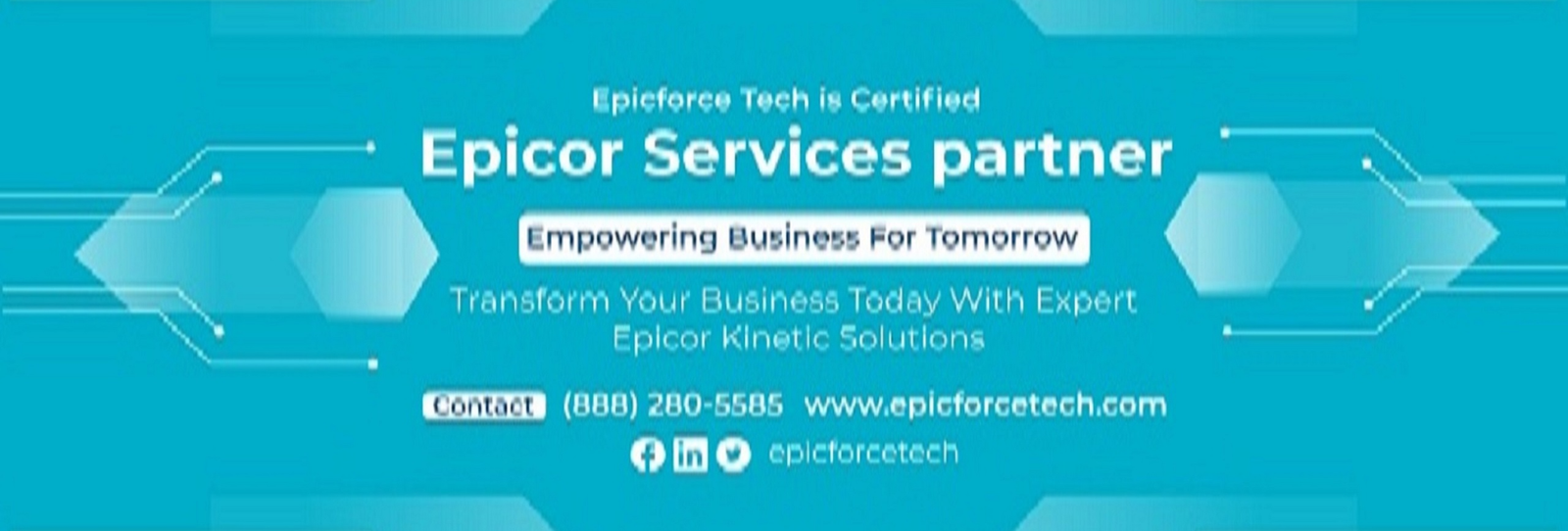
Rolling out ERP training while maintaining daily operations is a balancing act. Too much downtime, and you frustrate users. Too little training, and adoption suffers. At Epicforce Tech, we’ve helped manufacturing and distribution teams implement Epicor® training that boosts performance without halting production.
In this guide, you’ll learn:
Why operational efficiency and training don’t have to conflict
How to design training that aligns with real workflows
What training delivery methods work best in an ERP environment
Practical metrics to track training impact
1. The Cost of “Business-as-Usual” Training
ERP training often gets relegated to a conference room, disconnected from daily workflows. The result?
Operational interruptions: Teams block out hours or days, slowing critical processes
Low retention: Learning without context is quickly forgotten
Lack of momentum: And when users return, they’re behind on their “real” work
According to NetSuite, successful ERP training must be role-specific, on-the-job, and ongoing—not delivered as one-off events. A smarter approach is needed.
2. Align Training to Workflow: Tie Learning to Output
Instead of generic sessions, structure training around daily user workflows:
| Workflow | Training Activity |
|---|---|
| Order entry | Walk through creating, editing, and reviewing sales orders in Epicor® |
| Production planning | Use live MRP examples to show planning exceptions |
| Inventory adjustments | Practice count and correction using current warehouse scenarios |
| Financial closings | Show GL posting in the context of real month-end dates |
By pairing modules to actual tasks, users understand why they’re learning Epicor® actions, not just how. This approach keeps learning relevant and minimizes disruptions.
3. Employ Blended Delivery for Maximum Flexibility
Best-practice ERP training uses a mix of formats to minimize disruption:
Microlearning video shorts (5 to 7 minutes): Cover a key Epicor® task. Watch, perform, and pause.
On-demand resources: BAQ and workflow templates that reinforce lessons.
Hands-on sandbox activities: Real-world scenarios in isolated environments.
Peer learning groups: End-user champions share usage tips weekly.
Refresher sessions: 30-minute live Q&A after major Epicor® rollouts.
This blended model supports ongoing development while maintaining team productivity. If someone misses a session, they can catch up on their own schedule.
4. Make Training Practical: Build BAQs, Not Just Slides
Abstract lessons do not stick. Introduce training through useful tasks, such as:
Building a “Top 10 Backlog Orders” BAQ during the session
Simulating inventory corrections in sandbox environments
Creating dashboards using your organization’s KPIs
Hands-on, task-based training keeps attention high and makes learning relevant.
5. Keep It Lean: Microlearning and Just-in-Time Reinforcement
Microlearning boosts retention and reduces distraction. In practice:
Break training into short segments under 10 minutes
Use real transactions for demonstrations
Reinforce with quick tips like “BAQ Formula Fridays”
These small, ongoing reinforcements often drive more impact than full-day workshops.
6. Measure Training Success: Focus on Outcomes
To demonstrate ROI, track performance using metrics like:
User adoption rates: How many employees log in daily?
Support ticket volume: Are ERP-related requests declining?
Processing times: Is order entry or purchase order generation faster?
BAQ usage: Are more users building or running queries on their own?
These indicators help measure whether training is producing operational improvements.
7. Best Practices Checklist: Training Without Slowdowns
Align sessions to downtime or light-shift periods
Use live sandbox data, not outdated or theoretical examples
Focus training on tasks directly connected to the user’s job
Rotate delivery methods including video, sandbox, and group sessions
Communicate what’s coming next in the training journey
Gather feedback and improve content weekly
Connect training metrics to business outcomes
8. The Epicforce Tech Difference
Epicforce Tech has helped teams across industries train on Epicor® while preserving daily productivity. We emphasize learning that solves real problems within real systems. Our approach includes:
Building dashboards, BAQs, and workflows in sandbox environments
Answering real-time support requests during training
Tracking results like fewer help tickets and faster process completion times
Our training is always connected to measurable impact.
9. Ready to Build Custom Epicor® Training That Doesn’t Interrupt?
If your goal is to:
Align ERP training with day-to-day operations
Track training progress with metrics
Help your team learn without losing momentum
Call Epicforce Tech at (888) 280-5585
Email us at info@epicforcetech.com
Learn more at epicforcetech.com/epicor-training
Let’s work together to build a training program that fits your team’s pace and delivers long-term results.
Conclusion
You do not have to choose between operational productivity and ERP training. When done right, Epicor® training builds long-term capabilities without slowing daily workflows. Use blended delivery, real-world context, microlearning, and metrics to ensure adoption and performance.
Epicforce Tech is here to guide you through a training process that delivers value, improves efficiency, and sets your users up for success. Reach out to start building your Epicor® training strategy today.

